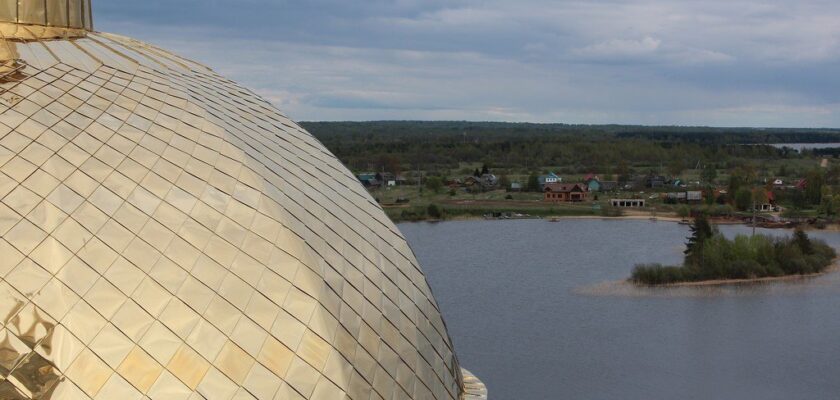Nilo-Stolobenskaya Desert Monastery
Nilova Desert is a legendary active male monastery located on Stolobny Island in the eastern part of Lake Seliger. This ancient monastery has been an important pilgrimage center for centuries. The Nilov Desert owed much of its prosperity and authority to the patronage of the reigning Romanov dynasty. Today, the ensemble of monastery buildings, surrounded on all sides by magnificent landscapes, serves as one of the main ornaments of the Tver region and a popular tourist attraction.
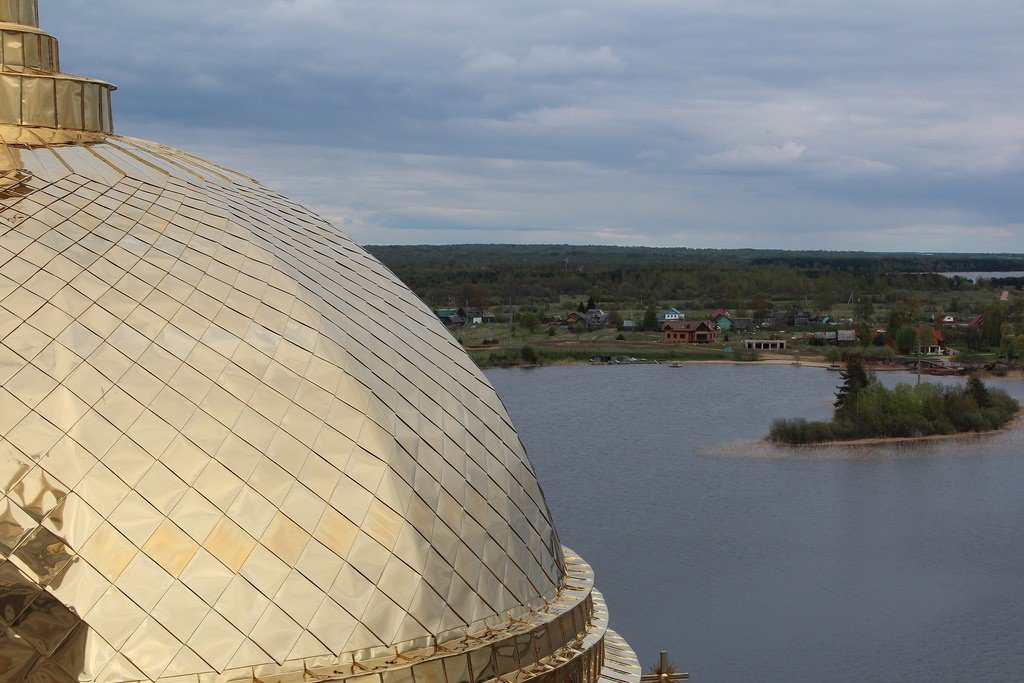
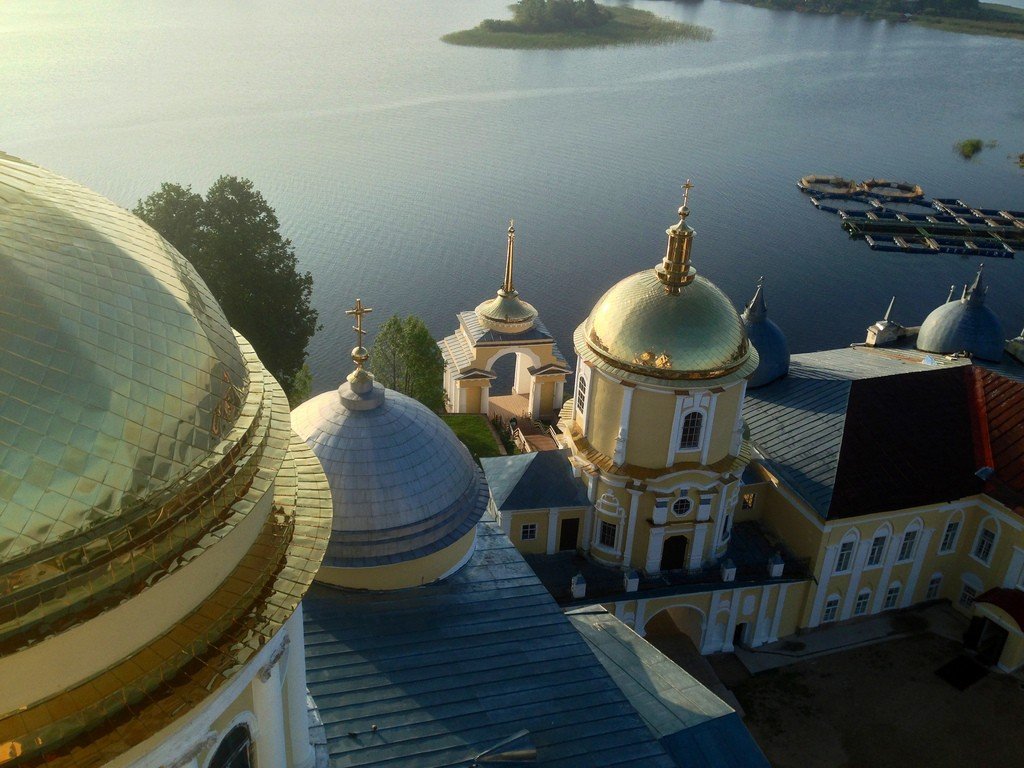
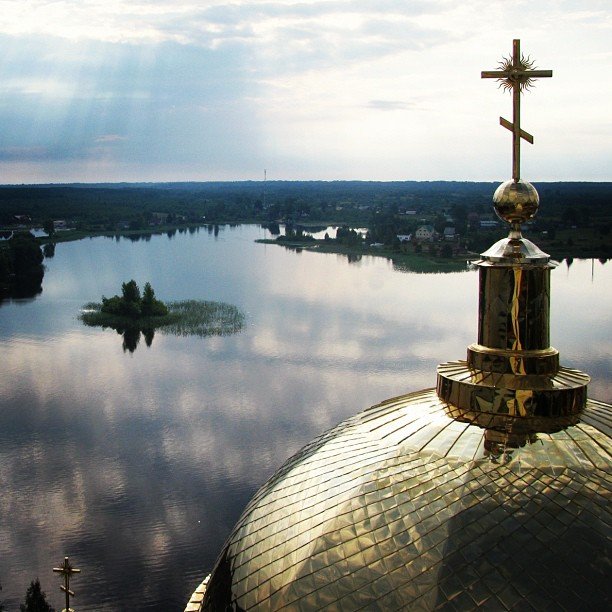
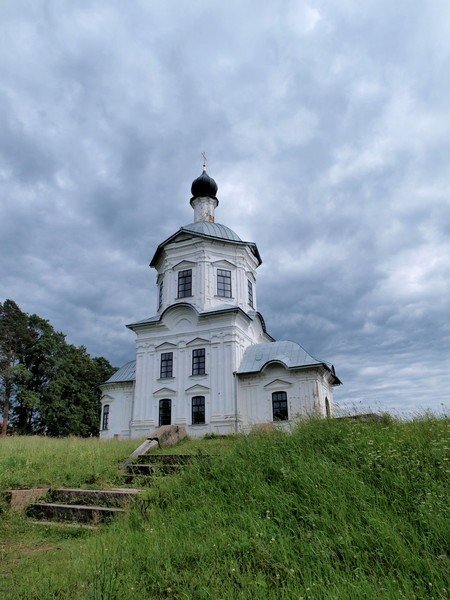
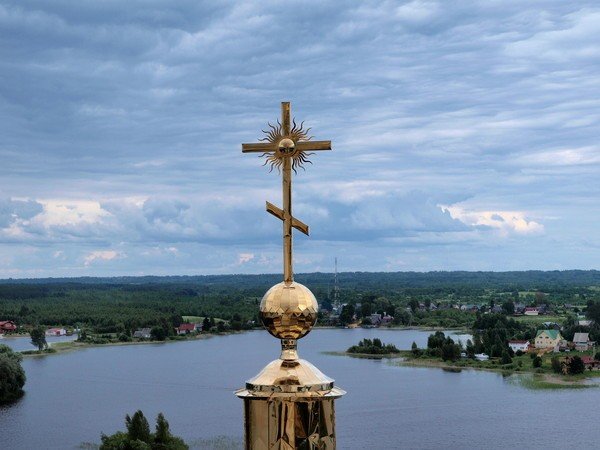
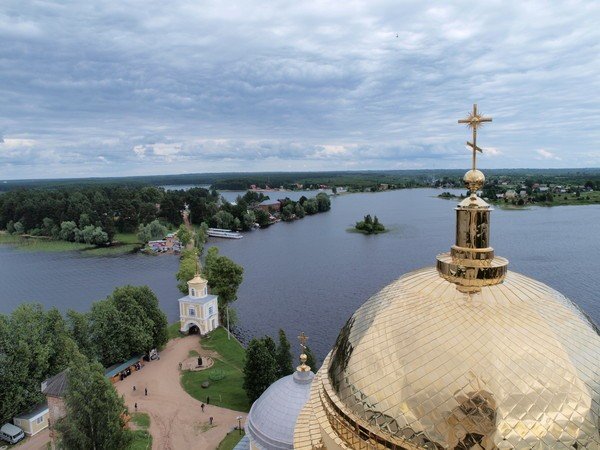
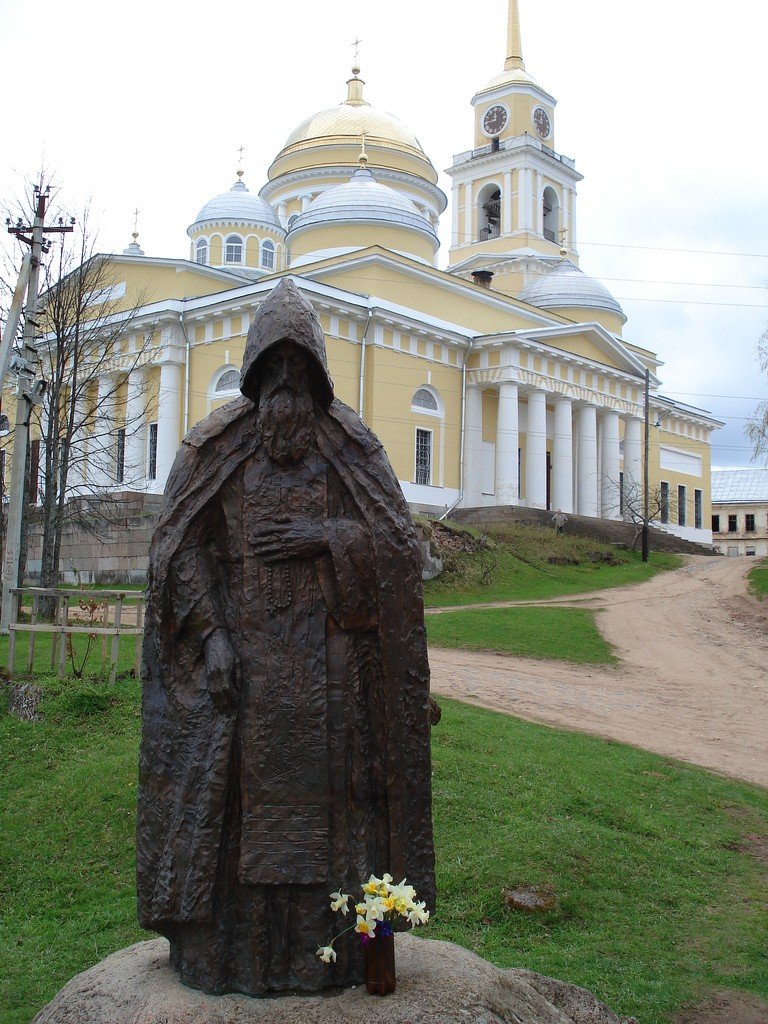
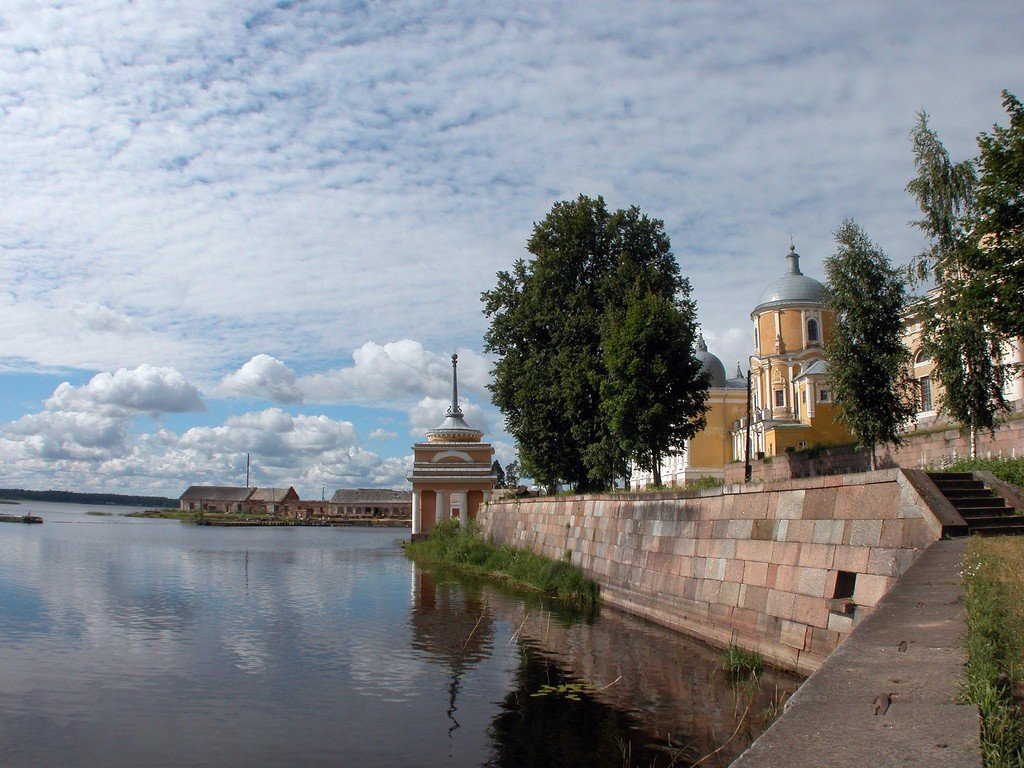
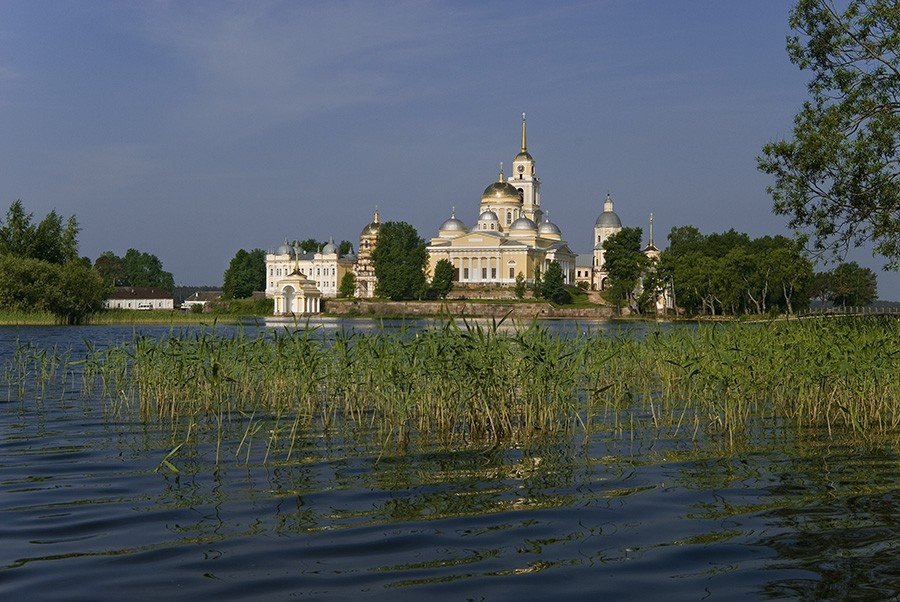
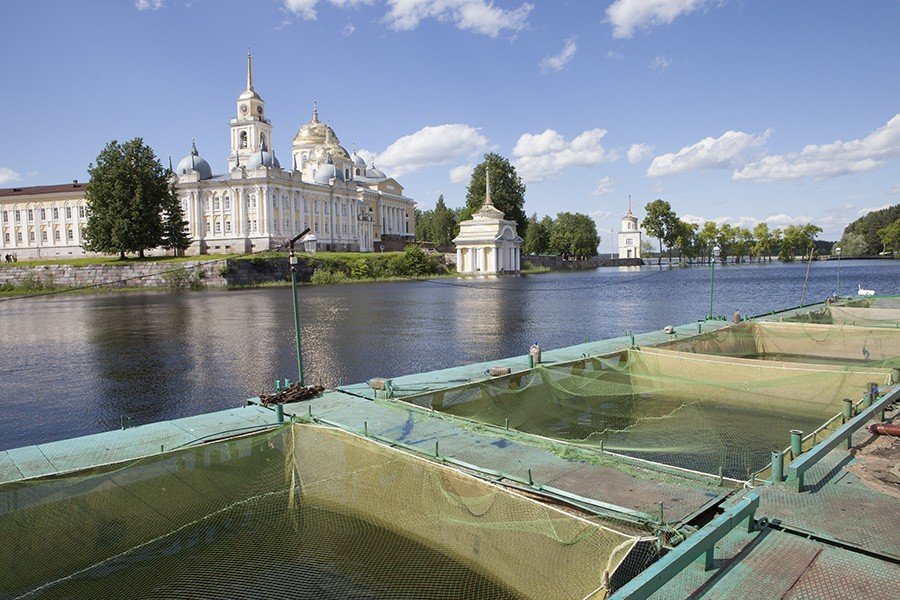
Video: Nilova Desert
ContentsHighlights
The Nilova Desert Monastery is named after the hermit Nil Stolobensky, who settled on the island in the early 16th century and was famous for his spiritual exploits. The second name of the monastery, accepted in church literature, is the Nilo-Stolobenskaya Desert. The monastery is located 25 kilometers from the ancient town of Ostashkov, and the nearest settlement to it is the village of Svetlitsa standing on the bank of the Seliger. The mainland and the monastery complex are connected by a bridge, which can be traveled by car.
.The spectacular architectural ensemble of the monastery, formed by the mid-19th century and restored in the early 2000s, looks representative of the capital. The majestic main monastery cathedral, designed by St. Petersburg architect Joseph Charlemagne, the eastern facade of the monastery, facing the lake and framed by a terrace of hewn granite, make the Nilova Desert look like a corner of St. Petersburg. The yellow and white decor of the buildings only strengthens this association.
.Nilova Desert annually receives thousands of pilgrims and tourists. Near the monastery appear infrastructural objects – small hotels, cafes, many come here on excursions, which are organized in Ostashkov, at the campgrounds, in hotels built on the banks of the Seliger.
.
History of the Nilova Desert
The history of the Nilova Desert began in the first half of the 16th century. Church legend connects its foundation with the name of the Monk Nil Stolobensky. It is not known what the name of this ascetic was in the world, but there is information that he was a native of the Novgorod lands, and chose his monastic name in memory of St. Nil the Postnik (Sinai), a zealous hermit and apologist of asceticism. The Novgorodian took his tonsure in the St. John the Theologian Krypets Monastery, near Pskov, but in 1515 he left the monastery, deciding to retire to a hermitage.
.
For more than 10 years Neil lived in a cell, cut down in the forest wilderness, in complete solitude and prayer. The legend says that once he with the help of a miraculous icon, he defeated the robbers who attacked him. After this incident, people from all over the area came to Neil with pleas for help in various spheres, and he had to look for an even more desolate place. So the ascetic ended up on Stolobny Island, where he lived for almost 30 years, having taken a vow of non-reclining and fulfilled it. By doing so, Neil accomplished a unique spiritual feat. Neither day nor night he did not allow himself to sit down or lie down, and in extreme exhaustion he hung himself with ropes on hooks, which he fixed in the wall of his cell. The righteous man passed into the next world in 1555, and was buried in the grave, which he dug in his cell. Before his death Neil bequeathed to erect a monastery on this place. Forty years later, by decree of Patriarch Job of Moscow, a small monastery was founded on the island and named after St. Nil. It quickly acquired the fame of a very revered place. The number of pilgrims flocking to these lands increased year by year.The first abbot of the Nile Desert was the Monk Herman. Under him, the monastery did not prosper, and even subjected to ruin by the Lithuanians. The new abbot, a student of Herman – Nectarius, from his mentor received only a wooden church and 6 unpretentious cells. But the young monk showed great organizational skills and prudence, managing to attract to the monastery the attention of many notable persons – influential churchmen, Princes Trubetskoy and Pozharsky. He favored the first Russian tsar of the Romanov dynasty, Alexei Fedorovich, by predicting the birth of his son. As a sign of gratitude, the autocrat ordered to annually allocate money and provisions to the Nilaya Desert. Since then, the monastery began to rise and prosper, remaining until the revolutionary events of 1917 under the patronage of the royal dynasty, accepting generous gifts from Russian rulers and court nobility.
.
A completely unique gift was given to the monastery by Alexander I, who came to the Nilova Desert in 1820. He granted all the abbots of the monastery the right to wear a diamond panagia. In addition, the Emperor, who was delighted by the beauty of the Church of the Exaltation of the Holy Cross, built in the 80s of the XVIII century, promoted large-scale construction on the territory of the monastery. By the middle of the century before last here formed an outstanding architectural ensemble, in whose appearance intertwined features of classicism and baroque.
.
By the beginning of the last century in the Nile Desert lived about 1000 inhabitants. The monastery had the fame of one of the most revered and wealthy monasteries in Russia, a year here arrived more than 100 thousand pilgrims. The monastery owned smithies and workshops, a hospital and a school for peasant children, extensive land, farmsteads in Moscow and St. Petersburg and even 2 steamships. The Bolsheviks’ power prepared the same bitter fate for the Nilo-Stoloben Desert as for the majority of religious buildings. It was looted, and the brethren were put on trial. During the period when a colony was established on the island, juvenile delinquents were punished by chipping frescoes in ancient churches. In the pre-war period the territory of the monastery served as a place of confinement for Polish prisoners of war, during the Great Patriotic War a hospital worked here, later a home for the elderly, and then a tourist center. During this time, many buildings became dilapidated, others were deliberately razed to the ground. The desecrated ruins were returned to the Russian Orthodox Church in 1991, after which a large-scale restoration began here.
.
Monastery complex
The architectural ensemble of the Nilova Desert includes more than three dozen buildings of the late XVII – mid XIX century. In the northeast of Stolobny Island, near the causeway connecting it with the Svetlitsa peninsula, next to the Svetlitsa gate tower built in the XIX century, there is a monastery farmstead. In the XVII century it was enclosed by a stone wall, which was later rebuilt. Today only two 8-sided towers, erected in the second half of the XVII century, remind of it.
Among the 6 temples included in the architectural complex of the monastery, the Epiphany Cathedral, which decorated the monastery in 1833, dominates. It rises in the very center, impressing with its majestic classical forms and shining with five gilded domes. This magnificent structure only by chance did not become the property of St. Petersburg, as the project was originally developed for the construction of St. Isaac’s Cathedral. It was ordered to the Russian architect of Italian origin Carl Rossi, the author of many outstanding ensembles in St. Petersburg. For a number of reasons he did not realize his architectural plan, and the architect Joseph Charlemagne continued to work on the project. The construction work was supervised by Angelo Botani, a native of Lausanne, noted in archival documents as a “master of stonework.”
.
The Epiphany Cathedral houses the main relic of the monastery – the relics of St. Nil. The interiors of the temple are decorated by modern masters. From the authentic painting is almost nothing left, only under the dome, where, probably, it was difficult to get to the vandals, fragments of frescoes Terenty Glazukhin 1833.
.
On the bell tower of the temple, crowned with a tall spire, arranged a vantage point, from where there are spectacular views of the expanse of Lake Seliger and the monastery property.
.Before the Epiphany Cathedral was built, the main church in the Nilaya Desert was the Church of All Saints. This small quadrangular structure, located in the northwestern part of the cathedral courtyard, is the oldest religious building of the monastery. It was erected at the turn of the XVII-XVIII centuries, and originally the Church of All Saints was called the Church of St. Nil. Later the church was added to the hospital building and became known as the hospital church. Today restoration work is being carried out here.
.Above the eastern gate of the Nilova Desert, through which runs the passage to the territory of the monastery from the lake, towers the church of St. Nil Stolobensky. It was erected in the middle of the XVIII century on funds raised by the whole world. The appearance of the building traces the features of the gate church of the Donskoy Monastery in Moscow, as both buildings were erected according to the same design plan. The temple, distinguished by lightness and elegance of forms, is crowned with a high rotunda decorated with a gilded ball and a cross. No less beautiful is the pyramidal gate church of Peter and Paul, which rises above the western gate of the monastery. The date of its construction is 1764.
.Right at the water’s edge, away from the main monastery buildings, stands the Church of the Exaltation of Christ the Lord. It was erected in 1788 on the site of a small chapel built in honor of St. Nil. It is said that the amazing beauty of this baroque church prompted Emperor Alexander I, who came to the monastery, to generously endow the monastery and finance from the treasury its large-scale improvement. The Tsar was sincerely delighted by the elegant interiors of the church, made by Russian masters in the style of the Catherine Baroque, the openwork iconostasis, stucco wall decorations, skillful painting.
.
Today there is little left of the former decoration of the Church of the Exaltation of the Cross: most of the decorations were chipped or simply fell into disrepair. Restorers have to create many elements at their discretion, because the drawings, descriptions and photos of the church have not survived either. Restoration of the stucco is slow: restoring it in an authentic style has become an extremely difficult task for modern craftsmen.
.
On a hill in the western part of the island you can see the foundations of the Church of St. John the Baptist, built at the end of the XVIII century. It is known that during its construction was discovered dugout, which became a home for St. Neil in the early years of his stay on the island. A hollow was preserved in the floor of the church at this place. St. John the Baptist Church has always been a particularly revered place among the faithful, but in 1939 it disappeared from the face of the earth. Bricks from the masonry were used in the construction of the dam that connected the island with the Big Land. There is no trace left of the ancient cemetery, formerly adjacent to the temple.
.In addition to the temples of the Nilova Desert, it is worth visiting other monastery buildings. Many of them are carefully restored and look quite spectacular. On the northern side of the Epiphany Cathedral is the building of the former refectory. The first floor was built in 1669-1672, it is the oldest surviving monastery building. The second level was added on in 1758 and 1804, it was the location of the monastery hospital.
.
Adjoining the gate church of Peter and Paul is the former treasury and abbot’s building, erected at the very end of the XVIII century. Today it houses a new refectory. The long narrow hall with a high ceiling can accommodate more than two hundred people. Part of the premises located on the second floor is given to the monastery museum. Here is an extensive collection of items telling about the history of the monastery: archival documents, books, photographs, ancient images of local icon painters.
.
In the eastern and southern parts of the monastery yard stretches a long two-story building built in the Gothic style. It is decorated with columns, semi-columns, domes and pyramids at the corners. In the southeastern part of the palace, adjoining the church of St. Nilus, the bishop’s quarters are still located. Right in front of it, on the lake side, the Bishop’s Wharf was built back in 1814. It was built especially for the procession of the Holy Cross, which was organized every year from the town of Ostashkov. The welcoming grand pier, which supports the general stylistics of the monastery complex, remains the central structure of the embankment, erected of hewn granite in the middle of the century before last.
.
The monastery’s outbuildings are located by the shore of the lake bay. In the old one-story buildings, built of stone, today housed garages, carpentry workshop, cattle yard, cells for workers.
.
Judging by pre-revolutionary photos, earlier the Nilova Desert was drowned in the greenery of parks and gardens. Today only lonely trees enclosed in concreted pits remind of those times. Greening here began 10 years ago. Then were laid flower beds and a garden, which has already begun to bear fruit.
.Practical information
Entrance to the territory of the Nilo-Stoloben Desert is free of charge. Payment in the form of donations will be required to climb the bell tower, visit the museum and the opportunity to take a photo in the open area of the monastery complex. Each of these services will cost 100 rubles.
.For pilgrims on the territory of the monastery there is a hotel. Tourists can stay, for example, in a small hotel “Svetlica” for 15 rooms, which is a 10-minute walk from the monastery. The hotel has a swimming pool with a sauna, a restaurant, on the territory there are gazebos with barbecues, tables for playing tennis and billiards. The hotel has a pier and boats for rent. The daily cost of accommodation – from 5000 rubles.
.In the village Svetlitsa can rent accommodation from locals, bargaining is appropriate. Those who wish can also stay at one of the campgrounds on the shores of Lake Seliger.
.
A few kilometers from the Nilova Desert, in a pine plantation on the shore of the lake, sandy beaches, where in summer it will be nice to swim. In the settlement you can put up a tent for free, which is gladly and do many vacationers.
.
Nilova Desert has its own production – candle factory, jewelry workshop, shop where dairy products are produced, stable, apiary. Ecologically clean products are sold in monastery shops, on the pier, on the square near the bridge. Stolobensky bread, baked from yeast-free dough on holy water from the Okovets spring, is in great demand. Rye bread with malt produced by monks is also incredibly tasty. Honey, cottage cheese, almond, oatmeal cookies, chocolate cakes with honey are worth eating.
.
The monastery shops offer jam from different berries, canned vegetable salads, herbal teas, kvass, morses, honey from the monastery apiary. Dairy products from the monastery’s farmstead are represented by fresh milk, cheese, cottage cheese. The main tasty souvenir from the Nilaya Desert will be dried, smoked or salted fish caught in Lake Seliger. All products here are really very tasty and fresh, but the prices are similar to those in Moscow.
.On the territory of the monastery there is a tea house, where you can have lunch for about 500 rubles for two people.
.In the souvenir shops of the monastery sell icons, books, church utensils. As a memento of the Nile Desert is worth buying and a figure of Nil Stolobensky. The Monk is depicted in various forms. The most popular are statuettes depicting the ascetic leaning on hooks.
.How to get there
To get to the Nilo-Stolobenskaya Desert you have to transfer via Ostashkov. From the railway station Moscow-Oktyabrskaya (Komsomolskaya Square, 3) there is a train № 084Ch Moscow – Ostashkov. The train goes 12 hours. 21 min. You can get to Ostashkov twice as fast by bus. Several trips depart daily from the bus station “Northern Gate” (7 Dybenko St., Khovrino metro station). Travel time is 6 h. 50 min.
.From Ostashkov to the village Svetlitsa buses run. The distance of 29 km they pass with stops in 50 minutes. A cab ride from the district center to the monastery will cost approximately 650 rubles. In summer, pleasure boats depart from the pier of the city River Station for mini-cruises on Seliger. During the voyage there is a visit to Stolobny Island with a tour of the monastery, which lasts 4 hours (cost – 700 rubles). You can get to the monastery by motor boat or kayak, renting them at one of the campgrounds located on the lake.
.Auto tourists from Moscow will get to the Nilaya Desert, located 387 km northwest of Moscow, in 5-6 hours. From the capital you can drive through Volokolamsk and Rzhev or through Tver and Torzhok. Motorists report that the finishing section of the road leading from Ostashkov to the village of Svetlitsa, where the monastery is located, is in poor condition, there are cracks and potholes in the asphalt.
.In winter, when there are not too many tourists in the Nilaya Desert, you can park near the monastery, but in summer you will find a free place only in the distance from it.
.